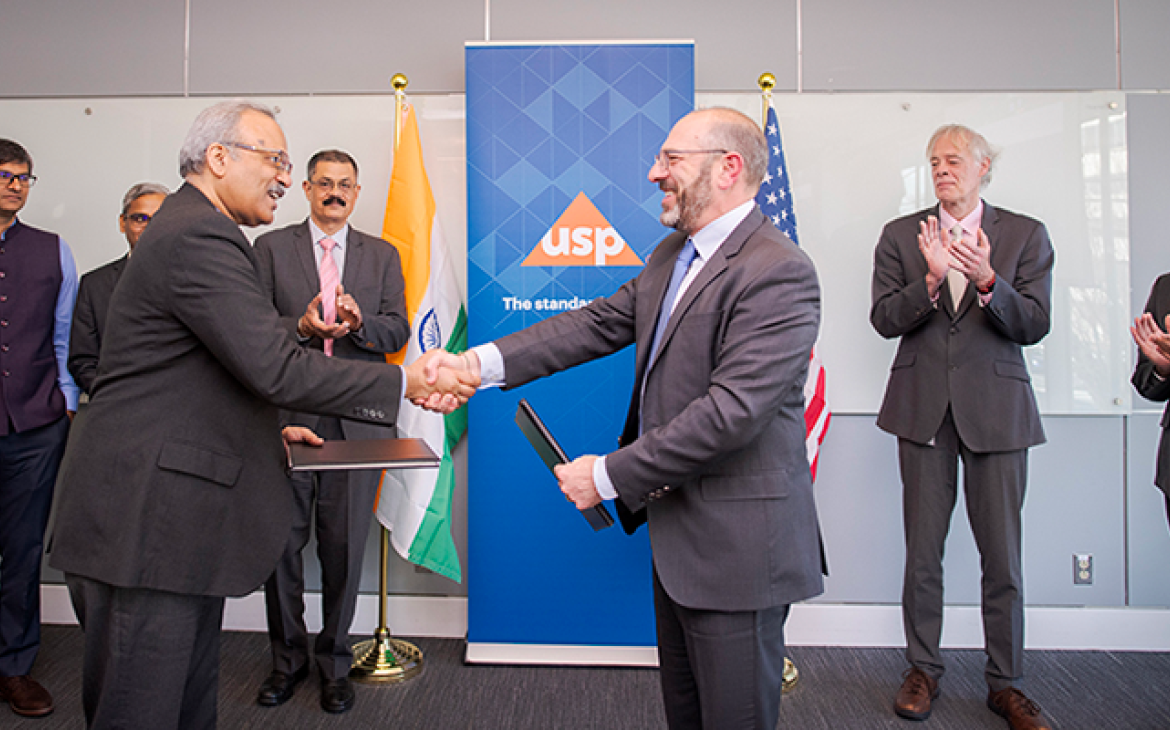
In 2022, more than 8,000 people in the Kyrgyz Republic developed tuberculosis (TB), including approximately 3,000 people who developed multidrug resistant tuberculosis (MDR-TB), a form of TB that is difficult to diagnose, treat, and cure. The Kyrgyz Republic is also one of the top 30 countries with the highest rates of MDR-TB worldwide, according to the World Health Organization (WHO).
Four years ago, the USAID Cure Tuberculosis project, led by JSI, in partnership with USP, kicked off in the Kyrgyz Republic with an ambitious goal – prevent, detect, and cure more patients of MDR-TB nationwide. As the project ends, we reflect on the progress made in combatting MDR-TB across the country, and the important work still left to do.
Together with JSI, we helped strengthen drug procurement, streamline registration of WHO-prequalified TB drugs, improve TB drug management and warehouse management, introduce post-marketing surveillance, and strengthen national quality control laboratories.
______________
Combatting TB in the Kyrgyz Republic
Strengthening the supply chain and health system for better diagnosis and treatment
Learn more about the project
______________
Result highlight 1: Ensuring quality procurement
Quality-assured TB medicines should be available and affordable to all patients, no matter where they live. Yet, many countries prioritize price over quality when it comes to procuring medicines. While price is an important consideration, poor-quality medicines harm patients and communities, and undermine trust in health systems.
Making medical products more affordable for consumers is essential but shouldn’t come at the expense of quality.
Although the WHO Model Quality Assurance System for Procurement Agencies (MQAS) provides guidance to help countries evaluate suppliers and purchase, store, and distribute medical products, research suggests that not all countries apply this guidance consistently, nor do all local distributors follow proper quality standards.
To strengthen procurement of quality-assured TB medicines in the Kyrgyz Republic, we helped integrate quality into national procurement policies and amend existing law to procure WHO pre-qualified TB drugs through UN agencies, including the Global Drug Facility. We also worked with national authorities to incorporate quality as a key criterion considered on par with price for procurement tenders.
But legislation and policy change were only part of the solution to stronger, quality procurement. To qualify for government purchase, products must also be nationally registered. However, due to small market size, only one manufacturer of WHO pre-qualified TB medicines was interested in registering their products in the Kyrgyz Republic. Thanks to project support, the manufacturer prepared applications for 11 WHO prequalified TB products in-country, including dosages for children, which are pending national registration.
______________
Procuring for quality in Southeast Asia
Improving procurement of quality-assured medical products and building supply chain resilience
Learn more
______________
Result highlight 2: Establishing post-marketing surveillance
Ensuring the quality of TB medicines doesn’t stop once they’re registered or procured for public use. Post-marketing surveillance, or continued monitoring of a product’s quality and safety once it enters the market, is critically important to ensure that medicines work as expected for patients. Yet, this key function hadn’t yet been recognized by law or incorporated into practice by the national regulatory authority in the Kyrgyz Republic.
To help change that, the project expanded the national medicines procedure to include post-marketing surveillance and quality control as part of routine monitoring and worked with government authorities to institutionalize quality control and surveillance activities in the Kyrgyz Republic and test the quality of TB medicines stored in state health organizations.
We also trained the national quality control laboratory (NCL) on to conduct quality testing and equipment calibration, including methods to validate and verify high-performance liquid chromatography (HLPC) and ultraviolet visible spectrophotometry, which are required to test the quality of TB medicines.
As a result, the country piloted its first-ever quality surveillance activity using the validated and verified testing methods to successfully confirm that the sampled TB medicines were of assured quality.
______________
Tackling drug resistant TB in Central Asia
How manufacturing, laboratory and regulatory systems, and pharmacovigilance are helping to combat TB.
Explore the interactive map
______________
Result highlight 3: Strengthening health systems
Improved procurement and quality surveillance are two significant results of USAID’s Cure TB project, yet their benefits reach beyond TB.
For example, the skills gained by national regulators and laboratory to develop a sample plan, collect, test, and report findings, and calibrate specialized laboratory equipment, can be applied to any medical product moving forward, not just TB products. And, recognizing the value of the new national procurement standards and practices that ensure quality, national stakeholders opted to extend and apply the new policy to all medicines procured by the state.
In addition, two procedures originally developed to facilitate proper TB drug management, including medicines selection, forecasting, ordering, and quality assurance; and warehouse management, including storage and quality control of TB products, now also apply across all medicines and state health organizations, not just those used for TB.
USAID’s Cure TB project improved pharmacy management and quality control of all medicines nationwide, not just for TB.
______________
Beyond TB medicines
In the Kyrgyz Republic and Uzbekistan, investments in TB are resulting in broader health benefits, beyond just a single disease.
Read the blog
______________
Moving towards a sustainable future
Over the past few years, the Kyrgyz Republic has made great strides in responding to the TB pandemic, in part thanks to the successes of the Cure TB project. In addition, the gains made by integrating quality assurance across the national supply chain, including improving procurement, drug management, and quality surveillance, should have lasting effects on sustainability and the country’s broader health system.
With ongoing support, moving forward, the Kyrgyz Republic is well-positioned to continue to effectively tackle TB and other diseases, and improve public health. Additional training and capacity building, along with routine assessments and guideline revisions, will help ensure that procedures remain relevant and that the country can address new challenges and align with global best practices.


